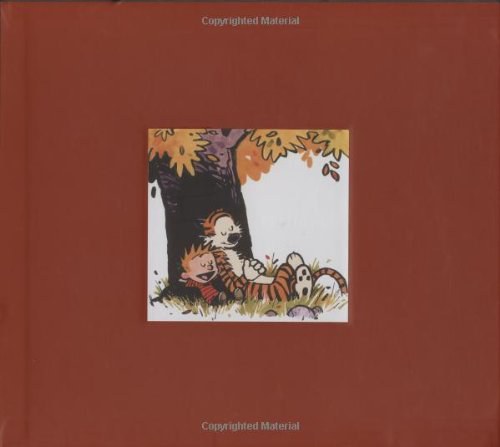
修辞问句与关联理论
书刊介绍
《修辞问句与关联理论》内容简介
本书主要研究两个问题。首先,探索言语接受者是如何辨别一个问句并非是真正问句,而是不需回答的旨在传达一个命题的修辞问句,又是如何推断出言者的话语意图,隐含之意的,论证了主张人类交流是通过对言语进行赋码与解码来实现的话码模式不足以解析修辞问句的隐含之意:修辞问句的分析必须引入推理模式。而1986年法国学者斯波伯(Sperber)和英国学者威尔逊(Wilson)提出的关联理论作为推理模式的重要代表,能够成功揭开修辞问句使用及理解的神秘面纱。其次,本书通过语料库数据,探讨了修辞问句有哪些不同的类型,又是如何分别在独白式文本语境下帮助言者实现其说服的意图的。作者:杨志霞
作品目录
内容提要前言
Chapter
1、Introduction
1.1、Research
background
1.2、Research
objectives
1.3、Outlines
of
the
current
study
Chapter
2、Literature
review
2.1、Previous
definitions
and
features
of
RQs
2.2、Previous
distinction
between
RQs
and
other
question
types
2.3、Previous
identification
of
RQs
by
linguistic
indicators
and
context
2.4、Previous
studies
on
functions
of
RQs
2.5、Previous
studies
on
the
two
genres
involved
in
the
current
study
2.6、Summary
Chapter
3、Theoretical
framework
—
Relevance
Theory
3.1、Speech
Act
Theory
3.2、Gricean
Maxims
vs.
neo-Griceans
and
post-Griceans
3.3、The
major
concepts
in
Relevance
Theory
3.4、Summary
of
claims
in
Relevance
Theory
3.5、Interpretation
of
interrogatives
in
Relevance
Theory
3.6、Interpretation
of
‘figurative’
language
in
Relevance
Theory
3.7、Interpretation
process
of
an
utterance
in
Relevance
Theory
Chapter
4、Methodology
in
the
current
study
4.1、Methodological
procedure
of
the
current
study
4.2、Brief
introduction
to
corpus
linguistics
and
the
corpora
used
in
the
current
study
4.3、Extracting
questions
from
the
two
genres
4.4、Criterion
for
identifying
and
interpreting
an
RQ
in
the
current
study
4.5、Summary
Chapter
5、Applying
analysis
categories:
question
types
for
inclusion
or
exclusion
5.1、Cases
excluded
from
the
current
study
5.2、Distinguishing
RQs
from
other
question
types
in
the
data
5.3、Analysis
of
RQ
categories
5.4、Summary
Chapter
6、Analysis
of
RQs
in
American
and
British
campaign
speeches
6.1、Theoretical
considerations
of
Speech
Act
Theory
and
Gricean
Principle
in
accounting
for
political
RQs
6.2、Use
of
RQs
rather
than
direct
assertions
in
political
speeches
6.3、Identification
and
interpretation
of
political
RQs
with
linguistic
indicators
in
terms
of
Relevance
Theory
6.4、Identification
and
interpretation
of
political
RQs
without
linguistic
indicators
in
terms
of
Relevance
Theory
6.5、RQs
with
explicit
answers
provided
in
political
speeches
6.6、RQs
not
observing
polarity
shift
in
political
speeches
6.7、RQs
containing
other
rhetorical
devices
in
political
speeches
6.8、Summary
Chapter
7、Analysis
of
RQs
in
newspaper
editorials
7.1、Theoretical
considerations
of
Speech
Act
Theory
and
Gricean
Principle
in
accounting
for
editorial
RQs
7.2、
Mode-related
differences
between
RQs
in
political
speeches
and
newspaper
editorials
7.3、Identification
and
interpretation
of
editorial
RQs
with
linguistic
indicators
in
terms
of
Relevance
Theory
7.4、Identification
and
interpretation
of
editorial
RQs
without
linguistic
indicators
in
terms
of
Relevance
Theory
7.5、RQs
with
explicit
answers
provided
in
editorials
7.6、RQs
not
observing
polarity
shift
in
editorials
7.7、RQs
containing
other
rhetorical
devices
in
editorials
7.8、RQs
serving
as
titles
or
subtitles
in
newspaper
editorials
7.9、Summary
Chapter
8、Conclusions
8.1、Background
to
the
current
study
8.2、Summary
of
the
discussion
throughout
the
current
study
8.3、Summary
of
contributions
to
the
field
of
RQ
study
8.4、Limitations,
applications
and
avenues
for
future
research
References
Appendices
相关推荐
-
![[英] 尼尔·弗格森《罗斯柴尔德家族(下)》](http://oss.shudanhao.com/caiji/chazidian/2023/9438.jpg)
[英] 尼尔·弗格森《罗斯柴尔德家族(下)》
《罗斯柴尔德家族(下)》内容简介:它是世界上最神秘的金融家族,它被认为是世界金融市场的幕后推手,关于它的传说广泛流传,它究
-

创业密码
《创业密码》内容简介:大众创业,万众创新。很多人戏称,只要站在风口,猪也能飞起来。但问题随之而来,到底什么样的人适合创业?
-

社会经济统计学:原理与应用案例
社会经济统计学:原理与应用案例 内容简介 社会经济统计学作为一门以应用为主的工具型学科,是高校经济、管理类各专业必设的专业基础课,足见其价值和作用。然而,多年的...
-

李钧|长铗《比特币》
2009年,比特币诞生。比特币是一种通过密码编码,在复杂算法的大量计算下产生的电子货币。虽然是虚拟货币,比特币却引起了前所未
-

不确定时代的质量管理:穿越周期的华为
《不确定时代的质量管理:穿越周期的华为》内容简介:这是一部从“穿越周期”的视角解读华为质量管理密码的专著。作者团队从“穿越
-

联盟:互联网时代的人才变革
《联盟:互联网时代的人才变革》内容简介:在充满变化的世界,联盟潜在的合伙人 将不确定的行业转变为可掌控的职业生涯 与世界紧密
-

苑举正哲学六讲
《苑举正哲学六讲》内容简介:人生而有求知欲,且会随着成长对万事万物的真理和规律有更强的兴趣。希腊哲学是西方哲学的骨干,呈现
-

称霸未来的企业
《称霸未来的企业》内容简介:科技的进步将极大地改变未来商业乃至我们的生活。如果跟不上时代的发展趋势,无论多大的企业都会被淘
-

准风月谈
《准风月谈》内容简介:本书是鲁迅1933年6月至11月间所作杂文六十四篇。1934年12月上海联华书局以“兴中书局”名义初版。包括《我们
-

如何安心
《如何安心》内容简介:本书通过佛教史上一些僧人学佛求法的故事,和作者对佛教经典的感悟,结合当代人面对的浮躁的世俗生活,难得
-

存在主义(精)
《存在主义(精)》内容简介:《存在主义》是陈鼓应编集的一本介绍存在主义及其主要哲学家、文学家思想和作品的书,分为三部分:“
-

ThinkPad之道
《ThinkPad之道》内容简介:从小红点到360度旋转铰链,ThinkPad总是带给人无限惊喜的设计理念从何而来? 从尼罗河之源到喜马拉雅山
-

诗的艺术(增补本)
《诗的艺术(增补本)》内容简介:本书以诗歌的形式论述各种文学体裁的特性,以古希腊、罗马杰作为楷模,批评流行的低劣作品,因此
-

历史唯物论与马克思主义经济学
历史唯物论与马克思主义经济学 本书特色 本书主要内容包括:生产方式的结构与生产关系的两重功能、科恩对生产力一元决定论的辩护:一个批判的考察、有机生产方式的变迁及...
-

MATLAB/Simulink权威指南:开发环境、程序设计、系统仿真与案例实战
《MATLAB/Simulink权威指南:开发环境、程序设计、系统仿真与案例实战》内容简介:本书全面、系统地介绍MATLAB/Simulink的基础知识
-

房地产开发企业会计从入门到精通(实战案例版)
《房地产开发企业会计从入门到精通(实战案例版)》内容简介:《房地产开发企业会计从入门到精通(实战案例版)》从一线会计工作者
-

无穷的魅力:清华学子感悟《从一到无穷大》
《无穷的魅力:清华学子感悟《从一到无穷大》》内容简介:此书为清华大学2018级新生阅读《从一到无穷大》,领略科学之美,学习自然
-

审计学(第七版)(经济管理类主干课程教材;“十一五”国家级规划教材)
审计学(第七版)(经济管理类主干课程教材;“十一五”国家级规划教材) 内容简介 自《审计学》(第六版)出版以来,我国审计行业的法律环境发生了重大变化,一系列新规...
-

经济指标解读-珍藏版
经济指标解读-珍藏版 本书特色 经济指标是判断经济趋势重要的工具,但对于缺乏相关知识的人来说,要准确解读它们相当困难。《经济指标解读:洞悉未来经济趋势和投资机会...
-

竞争战略
《竞争战略》内容简介:竞争战略是指企业在同一使用价值的竞争上采取进攻或防守的长期行为。波特在本书中提出了三种卓有成效的竞争





